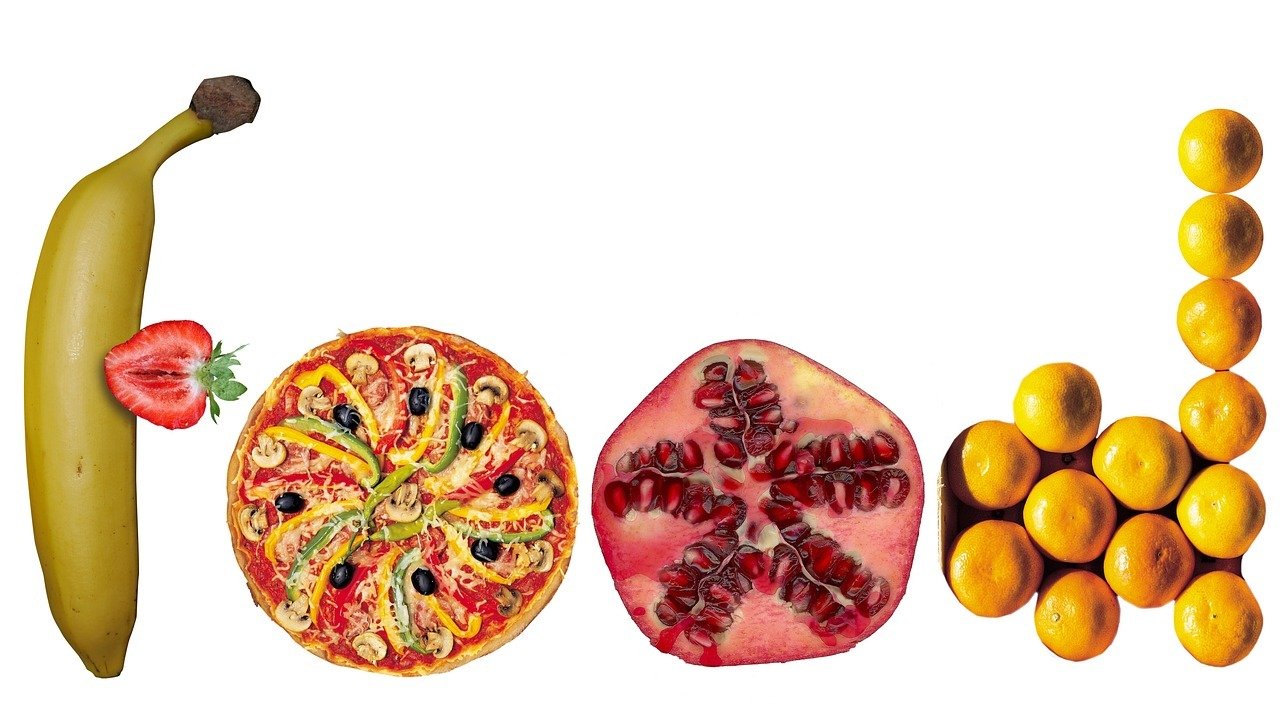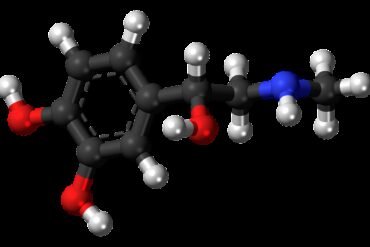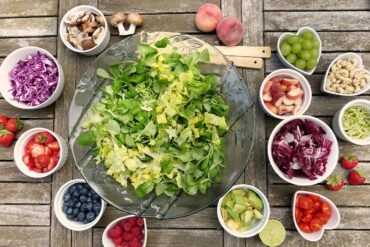Food Friends & Foes: Understanding Food Interactions and Nutrient Synergy

Table of Contents
The Impact of Food Pairings
Food is not just about individual nutrients; it is also about how these nutrients interact with each other when consumed together. The concept of food pairings goes beyond taste and flavor; it can have a significant impact on our health and nutrient absorption.
When certain foods are paired together, they can enhance each other’s nutritional value and bioavailability. This phenomenon is known as nutrient synergy. Nutrient synergy occurs when the combined effect of two or more nutrients is greater than the sum of their individual effects. It means that certain nutrients work better together, enhancing their overall health benefits.
Here are some examples of food pairings that have a positive impact on our health:
- Tomatoes and Olive Oil: The lycopene in tomatoes is better absorbed when consumed with healthy fats like olive oil.
- Spinach and Lemon: The vitamin C in lemon helps in the better absorption of iron from spinach.
- Yogurt and Berries: The probiotics in yogurt enhance the absorption of antioxidants from berries.
- Beans and Whole Grains: The combination of beans and whole grains provides a complete protein source.
On the other hand, some food pairings can hinder nutrient absorption or have negative effects on our health:
- Calcium and Caffeine: Consuming caffeine-rich foods and beverages like coffee or tea can interfere with calcium absorption.
- Iron and Calcium: Consuming calcium-rich foods along with iron-rich foods can hinder the absorption of iron.
- Meat and High-Glycemic Carbohydrates: Pairing meat with high-glycemic carbohydrates like white bread or pasta can lead to a spike in blood sugar levels.
Understanding food interactions and nutrient synergy can help us make better food choices and optimize our nutrient intake. By pairing foods strategically, we can enhance nutrient absorption, maximize health benefits, and support overall well-being.
Beneficial Food Combinations
Understanding how different foods interact with each other can help maximize nutrient absorption and enhance overall health. Certain food combinations can create synergy, where the nutritional benefits of each individual food are enhanced when consumed together. Here are some beneficial food combinations to incorporate into your diet:
- Spinach and Lemon: The high vitamin C content in lemon juice helps the body absorb iron from spinach more efficiently. Squeeze some lemon juice over your spinach salad or add it to cooked dishes to increase iron absorption.
- Tomatoes and Olive Oil: The healthy fats in olive oil aid in the absorption of lycopene, a powerful antioxidant found in tomatoes. Drizzle some extra-virgin olive oil on your tomato-based dishes to boost the benefits of lycopene.
- Yogurt and Berries: Combining probiotic-rich yogurt with antioxidant-packed berries creates a powerful duo for gut health. The live cultures in yogurt promote a healthy gut microbiome, while the berries provide essential vitamins and fiber.
- Beans and Whole Grains: Legumes like beans are low in methionine, an essential amino acid, while whole grains are rich in it. Combining beans and whole grains creates a complete protein source, making it an excellent option for vegetarians and vegans.
- Turmeric and Black Pepper: The compound in turmeric called curcumin has potent anti-inflammatory properties. When combined with black pepper, which contains piperine, the absorption of curcumin is significantly enhanced, maximizing its health benefits.
By incorporating these beneficial food combinations into your meals, you can optimize nutrient absorption and promote overall well-being. Remember to also focus on a balanced diet, variety, and moderation to ensure you are getting a wide range of nutrients from different food sources.
Adverse Food Interactions
While certain food combinations can enhance nutrient absorption and promote overall health, some food interactions can have adverse effects on digestion, nutrient availability, and even medication effectiveness. It is important to be aware of these adverse food interactions to optimize your dietary choices and prevent any potential health complications. Here are some common examples of adverse food interactions to consider:
- Iron and calcium: Consuming calcium-rich foods like dairy products or supplements along with iron-rich foods can hinder iron absorption. Calcium binds with iron, forming a complex that is poorly absorbed by the body. To maximize iron absorption, it is advisable to consume iron-rich foods separately or pair them with vitamin C-rich foods, which enhance iron absorption.
- Grapefruit and medications: Grapefruit and its juice can interfere with the metabolism of certain medications, including statins, antihistamines, and blood pressure medications. It inhibits enzymes responsible for metabolizing drugs, leading to increased drug levels in the bloodstream. This can result in potentially dangerous side effects. It is crucial to consult with your healthcare provider or pharmacist about the potential interactions between grapefruit and any medications you are taking.
- High-fiber foods and medications: High-fiber foods, such as whole grains, legumes, and certain fruits and vegetables, can reduce the absorption of medications. The fiber forms a gel-like substance in the digestive tract, delaying the release and absorption of medications. To ensure optimal medication effectiveness, it is recommended to take medications either one hour before or two hours after consuming high-fiber foods.
- Vitamin K and blood thinners: Vitamin K plays a crucial role in blood clotting, and certain medications called blood thinners, such as warfarin, work by reducing the blood’s ability to clot. Consuming large amounts of foods high in vitamin K, such as leafy greens, can counteract the effects of blood thinners and increase the risk of blood clotting. It is important for individuals on blood thinners to maintain a consistent intake of vitamin K-rich foods and work closely with their healthcare provider to manage their medication dosage.
- Alcohol and medications: Alcohol can interact with many medications, including pain relievers, sedatives, and antidepressants. It can intensify the sedative effects, increase the risk of liver damage, and alter the metabolism of certain medications. It is advisable to avoid alcohol or consult with your healthcare provider regarding the safe consumption of alcohol while taking specific medications.
Being aware of potential adverse food interactions can help you make more informed dietary choices and ensure the effectiveness of your medications. If you have any concerns or questions about food interactions, it is always best to consult with your healthcare provider or a registered dietitian.
Unlocking Nutrient Synergy
When it comes to nutrition, it’s not just about individual nutrients but also about how they interact with each other. This concept, known as nutrient synergy, emphasizes the importance of consuming a balanced diet to maximize the health benefits of the foods we eat.
Here are some key points to understand about unlocking nutrient synergy:
- Enhanced Absorption: Certain nutrients work together to enhance absorption in our bodies. For example, pairing vitamin C-rich foods, like citrus fruits, with iron-rich foods, such as spinach or lean meats, can boost iron absorption.
- Increased Bioavailability: Nutrient synergy can also increase the bioavailability of certain compounds. For instance, consuming foods rich in beta-carotene, like carrots or sweet potatoes, with a source of healthy fats can improve the absorption of this precursor to vitamin A.
- Antioxidant Powerhouse: Combining different antioxidant-rich foods can create a powerful effect. Antioxidants help protect our cells from damage caused by free radicals. Pairing foods like berries, which are high in vitamin C and other antioxidants, with nuts or seeds that contain vitamin E can provide a synergistic effect, enhancing overall antioxidant activity.
- Reduced Nutrient Interference: Some foods can either enhance or inhibit the absorption or utilization of certain nutrients. For example, consuming calcium-rich dairy products alongside foods high in oxalates, like spinach or beet greens, can reduce the absorption of calcium. On the other hand, combining these calcium-rich foods with vitamin D sources can increase calcium absorption.
- Maintaining Balance: Nutrient synergy reminds us that a balanced diet is crucial for overall health. It’s important to include a variety of nutrient-dense foods, such as fruits, vegetables, whole grains, lean proteins, and healthy fats, to ensure we’re getting the necessary combination of nutrients.
Understanding nutrient synergy can help us make informed food choices and optimize our nutrient intake. By unlocking the power of nutrient interactions, we can enhance the nutritional value of our meals and support our overall well-being.
Maximizing Nutritional Benefits
When it comes to nourishing our bodies, it’s not just about eating the right foods, but also understanding how different foods interact with each other. By harnessing the power of food interactions and nutrient synergy, we can maximize the nutritional benefits we receive from our meals. Here are some tips to help you make the most of your food choices:
- Pairing iron-rich foods with vitamin C: Iron is an essential mineral that plays a vital role in carrying oxygen throughout the body. However, iron absorption can be hindered by certain compounds in foods, such as phytates and tannins. To enhance iron absorption, combine iron-rich foods like spinach, lentils, or lean meats with vitamin C sources like citrus fruits, bell peppers, or strawberries. The vitamin C helps convert the plant-based iron into a more absorbable form.
- Combining healthy fats with fat-soluble vitamins: Vitamins A, D, E, and K are fat-soluble vitamins, meaning they require fat for proper absorption. Incorporate healthy fats like avocado, nuts, seeds, or olive oil into meals containing these vitamins to ensure optimal absorption. For example, drizzle olive oil over a salad containing vitamin-rich leafy greens or enjoy a handful of nuts alongside a vitamin-packed fruit smoothie.
- Including probiotics with fiber-rich foods: Probiotics are beneficial bacteria that support gut health and improve digestion. Consuming probiotics, such as yogurt or fermented foods, alongside fiber-rich foods like whole grains, fruits, and vegetables can enhance the digestive process. The fiber acts as a prebiotic, providing nourishment for the probiotics to thrive and promoting a healthy gut microbiome.
- Pairing turmeric with black pepper: Turmeric is known for its powerful anti-inflammatory properties, but its main active compound, curcumin, is not easily absorbed by the body. Combining turmeric with black pepper, which contains piperine, enhances curcumin absorption by up to 2,000%. Add a pinch of black pepper to dishes containing turmeric to unlock its full potential.
Understanding food interactions and nutrient synergy can help us optimize our nutrient intake and support overall health. By incorporating these tips into your daily eating habits, you can make each meal a nutritional powerhouse.


























